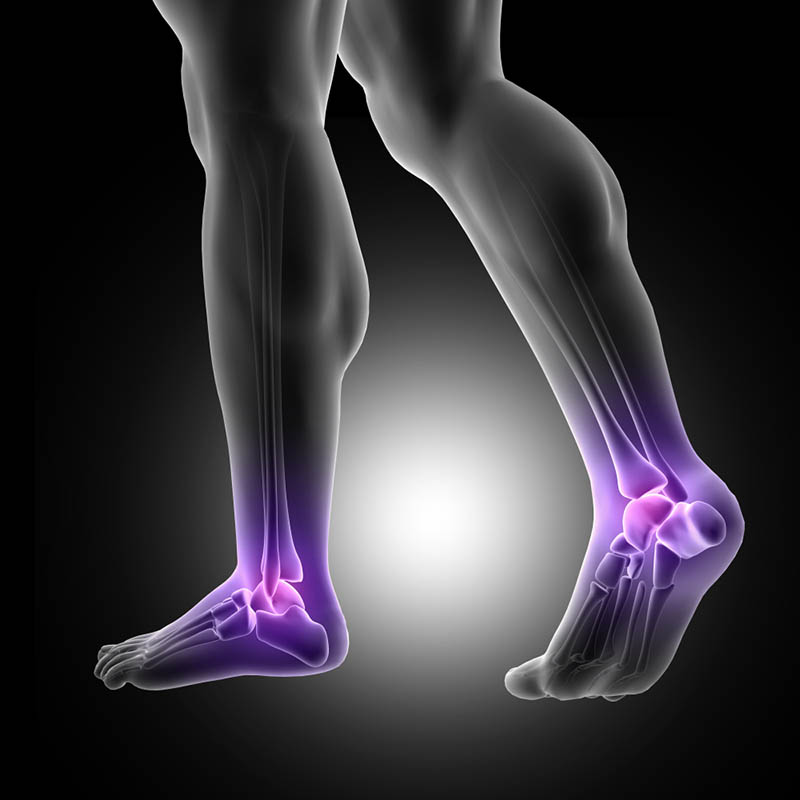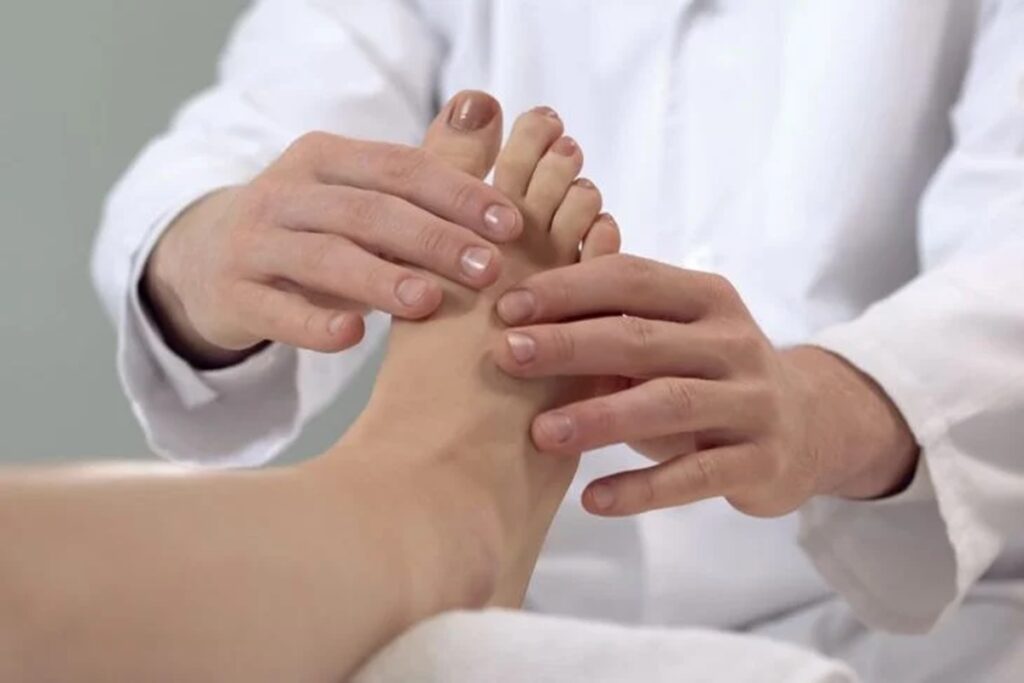Whether you're a professional athlete or a weekend warrior, your feet are your foundation. When they’re hurt, your entire performance—and quality of life—can suffer. That’s where a sports podiatrist comes in. Combining advanced training in sports medicine with deep knowledge of biomechanics, sports podiatrists offer specialized care tailored to active individuals. This blog explores what …
Whether you’re a professional athlete or a weekend warrior, your feet are your foundation. When they’re hurt, your entire performance—and quality of life—can suffer. That’s where a sports podiatrist comes in. Combining advanced training in sports medicine with deep knowledge of biomechanics, sports podiatrists offer specialized care tailored to active individuals. This blog explores what sets them apart, what injuries they treat, and why working with one might be the best decision you make this season. Whether you’re dealing with chronic pain, seeking injury prevention, or recovering from a recent sports injury, partnering with a podiatric sports medicine care provider is the first step toward elite sports performance.
What is sports podiatry?
Sports podiatry is a subspecialty of podiatric medicine focused on diagnosing, treating, and preventing foot and ankle injuries in physically active individuals. From runners and soccer players to dancers and gym-goers, a sports podiatrist understands how athletic demands impact foot mechanics—and how to restore optimal movement and function. With specialized surgical residency training and expertise in podiatric sports medicine care, these foot & ankle pain specialists are uniquely equipped to provide comprehensive foot care, including foot surgery, rehabilitation, and lifestyle changes to support recovery and performance.
Why Athletes Need a Specialist—Not Just a Doctor
Athletes put unique demands on their feet and ankles. General practitioners may be able to treat basic injuries, but only a specialist understands the complex relationship between movement patterns and injury risks in sport. That’s why seeing a sports podiatrist can make a significant difference in your recovery and long-term performance.
Your Feet Are Your Foundation: Don’t Settle for Generic Care
Your feet absorb impact, control balance, and power nearly every athletic movement. Treating them isn’t just about pain relief; it’s about performance, longevity, and preventing re-injury. A general physician might treat the symptoms, but a sports podiatrist targets the cause. For patients dealing with stress fractures, turf toe, tendinitis, or even dancers’ injuries and foot fractures, a sports injuries podiatrist develops a custom treatment plan that ensures both healing and safe participation in sports.
The Athletic Edge: How a Sports Podiatrist Thinks Differently
Sports podiatrists approach care through the lens of sport-specific movement. Whether you’re pivoting on the basketball court or sprinting down the track, they know how different activities stress the foot and ankle. This allows for precise diagnosis and treatment plans tailored to your sport and goals. They collaborate with coaches, trainers, physical therapists, and orthopedic surgeons to ensure a holistic recovery approach.
Injuries That Can End a Season (Or a Career)
Foot and ankle injuries can be career-altering if not addressed properly. From stress-related microtraumas to acute impact injuries, many athletes push through the pain without realizing the long-term damage being done. Early diagnosis and targeted treatment by a sports injury podiatrist can make the difference between a temporary setback and a chronic issue.
From Weekend Warrior to Pro Athlete—Injury Doesn’t Discriminate

Common sports podiatry cases include plantar fasciitis, Achilles tendonitis, stress fractures, and ankle sprains. These injuries don’t just hurt—they sideline. And untreated, they can lead to long-term damage or chronic pain.
The most frequently seen sports-related foot injuries include bruises to the foot or toes, injuries in the midfoot region, strain or tearing of the plantar fascia, turf toe, and fractures of the metatarsal bones. These conditions are especially common among athletes involved in high-impact or repetitive-movement sports.
Signs You’re Dealing With More Than Just a “Minor” Sprain
Swelling, bruising, persistent pain, or instability after physical activity shouldn’t be ignored. If rest and ice aren’t working, you could be masking a more serious issue like a ligament tear or a midfoot fracture. These are signs that you should consult a sports injury podiatrist near me who understands lower extremity sports and fitness injuries.
Real Treatment, Not Temporary Relief
Treating athletic injuries isn’t just about easing pain—it’s about correcting the source of dysfunction and helping you get back to peak condition. A sports injury podiatrist takes a proactive, long-term view of your health and performance to deliver results that last.
Beyond Ice and Rest: What a Sports Injury Podiatrist Actually Does
While basic home care has its place, advanced recovery often requires biomechanical assessment, customized rehab, and possibly orthotic intervention. Sports podiatrists create actionable, evidence-based plans that focus on both healing and returning to performance. Their expertise includes sports injuries treatment such as EPAT (shock wave therapy), platelet-rich plasma (PRP) therapy, corticosteroid injections, bone stimulators, and regenerative medicine techniques.
Diagnosing the Root Cause, Not Just the Symptom
Foot pain might stem from misalignment in your hips. An ankle sprain could be the result of weak glutes. A sports podiatrist looks beyond the foot to understand the chain of movement that led to the injury—and how to correct it. By focusing on the musculoskeletal system as a whole, they ensure long-term injury prevention and effective treatment.
Why Cookie-Cutter Treatment Plans Fail Active Patients
Athletes don’t all move the same. Generic treatments overlook differences in gait, training load, and sport-specific demands. Customized plans lead to faster healing, better results, and fewer setbacks. These may include custom orthotics, braces and splints, shoe gear analysis, and performance training adjustments.
The Tools of a Sports Podiatrist
Modern sports podiatrists have access to a wide array of diagnostic and therapeutic tools. These aren’t one-size-fits-all solutions—they’re targeted interventions built on data, movement analysis, and your unique performance goals.
Custom Orthotics: Do You Actually Need Them?
Not every athlete does. But for those with biomechanical issues like overpronation or leg length discrepancies, orthotics can be game-changers. A sports podiatrist ensures they’re fitted based on activity, not just foot shape. These custom orthotics can improve foot health, reduce heel pain, and alleviate symptoms from Morton’s neuroma, plantar fasciitis, or diabetic foot care conditions.
The Achilles tendon, the strongest and largest tendon in the human body, plays a crucial role in activities such as walking, running, jumping, and climbing stairs. When inflamed, a condition known as Achilles tendinitis develops, typically presenting as stiffness and pain in the back of the heel—especially noticeable in the morning. While this condition is often the result of repetitive stress or overuse, advanced cases may lead to a tendon rupture that could necessitate surgical intervention.
Gait Analysis: A Hidden Secret to Injury Prevention
By observing your walking or running mechanics, podiatrists can detect abnormalities that lead to injury. This insight helps refine training, optimize form, and reduce stress on the body. It’s especially critical for treating runners’ injuries and lower extremity sports injuries.
High-Performance Recovery: From Therapy to Surgery, Only When Needed
Surgery is a last resort. Most injuries respond well to conservative treatment, and sports podiatrists are trained to know when to push and when to pause. If foot & ankle surgery becomes necessary, procedures such as arthroscopy or amniotic membrane injections are discussed with the patient based on their unique treatment options and goals.
Building an Injury-Proof Foundation
Preventing injuries is just as important as treating them. Through proper training habits, footwear selection, and biomechanical analysis, a sports podiatrist helps athletes build a strong foundation for performance and longevity.
How to Train Smarter, Not Just Harder
Load management, rest days, and mobility work are just as critical as strength and conditioning. Sports podiatrists help you structure training that protects your feet while pushing performance. This proactive approach supports both injury recovery and prevention and management of chronic overuse.
Footwear, Surface, and Movement: The Holy Trinity of Prevention
Wearing the wrong shoes, training on hard surfaces, or poor form can all lead to injury. Learn how subtle changes in gear and environment can dramatically lower your risk. A podiatrist may also conduct a shoe gear analysis as part of your ongoing care.
Stretching Myths Athletes Still Believe
Not all stretches are helpful—and some can actually do more harm than good. A sports podiatrist helps identify what your body really needs to stay flexible and strong. Combining stretches with proper nutrition, lifestyle changes, and rehabilitation exercises ensures maximum effectiveness.
Choosing the Right Sports Injury Podiatrist

Not all podiatrists have the same focus. If you’re an athlete—professional or recreational—you need someone who understands your mindset, your sport, and the pressures of staying active. Choosing the right sports injuries podiatrist can make all the difference in recovery and injury prevention.
What to Look for Beyond Just Experience
Look for a practitioner who understands your sport, asks about your training, and takes the time to understand your goals. A strong communicator is just as important as a skilled clinician. When searching for a “sports injury podiatrist near me,” prioritize those with experience in treating specific conditions like turf toe, tendinitis, or foot fractures and who offer podiatric sports medicine care.
How We Approach Athlete Care Differently
At our clinic, we don’t believe in quick fixes. We focus on long-term results, building plans that work with your training schedule and athletic aspirations—not against them. We work collaboratively with sports medicine specialists, trainers, and physical therapists to ensure every treatment plan supports your full recovery.
Why Athletes Trust Wisconsin Foot & Ankle Clinic
At Wisconsin Foot & Ankle Clinic, we don’t just treat symptoms—we guide athletes through their full recovery journey. From diagnosis to rehabilitation, our team delivers personalized, sport-specific care that’s rooted in evidence and built around your goals.
Sports-Focused, Patient-Driven: Our Philosophy of Care
We combine deep sports medicine knowledge with hands-on experience treating athletes across a wide range of disciplines. Our team listens, adapts, and empowers you with the tools to recover fully and perform even better. From pediatric care to geriatric care and diabetic foot care, we offer comprehensive foot care services for all ages and activity levels.
Conclusion
Don’t let foot or ankle pain sideline you. Whether you’re recovering from an injury or trying to avoid one, working with a sports podiatrist can keep you in the game and on your feet. Schedule an evaluation today and take the first step toward lasting, high-performance recovery with a trusted foot & ankle pain specialist.
Don’t wait until a minor issue becomes a season-ending injury. Contact us today to schedule a personalized consultation with a trusted sports podiatrist. Whether you’re managing a current injury or focused on prevention, we’re here to help you move better, train smarter, and recover fully.
FAQs
What is podiatry physiotherapy?
Podiatry physiotherapy refers to physical therapy techniques used alongside podiatric treatment to improve strength, flexibility, and mobility in the foot and ankle. It’s often part of rehabilitation after an injury or surgery and is a core part of podiatric sports medicine care.
What is the difference between a podiatrist and a sports doctor?
A podiatrist specializes in the foot and ankle exclusively, while a sports doctor may treat a broader range of injuries across the body. A sports medicine podiatrist bridges this gap, focusing on foot and ankle care specifically for active individuals and sports-related conditions.
What is the most common problem treated by podiatrists?
One of the most common issues podiatrists treat is plantar fasciitis—a painful condition involving inflammation of the tissue along the bottom of the foot. They also frequently address Achilles tendonitis, heel pain, Morton’s neuroma, ankle sprains, and foot fractures, as well as offering services like diabetic foot care and general foot care.







